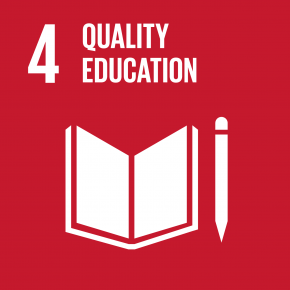|
Researcher Number(JSPS Kakenhi) |
30842215 |
|
Date of Birth |
1968 |
|
Mail Address |
|
|
Homepage URL |
|
|
|
|
Sekiguchi Hiroshi
|
|
|
Current Affiliation Organization 【 display / non-display 】
-
Concurrently University of the Ryukyus Graduate School of Health Sciences Associate Professor
University 【 display / non-display 】
-
-2011.03
The Open University of Japan Graduated
Graduate School 【 display / non-display 】
-
-2018.07
University of the Ryukyus Graduate School, Division of Medicine Doctor's Course Completed
Affiliated academic organizations 【 display / non-display 】
-
The Society of Critical Care Medicine
Research Interests 【 display / non-display 】
-
慢性呼吸器疾患看護
-
Respiratory Physiology
-
Respiratory Care
-
Basic Life Support
-
Simulation education
Research Areas 【 display / non-display 】
-
Life Science / Emergency medicine
-
Life Science / Physiology
-
Life Science / Clinical nursing
Acquisition of a qualification 【 display / non-display 】
-
General Nurse
-
Nursery Teacher
Published Papers 【 display / non-display 】
-
Mechanical Power to Predict Ventilator Liberation in Patients with a Tracheostomy
Toshiharu Nakama, Takehiro Umemura, Soukun Hoshino, Masahiro Tamashiro, Kenichi Satoh, Hiroshi Sekiguchi
Respiratory Care 2025.01 [ Peer Review Accepted ]
Type of publication: Research paper (scientific journal)
-
Hoshino, S; Sekiguchi, H; Takeuchi, R; Miyagi, K; Sato, Y; Castro, JJ; Yamamoto, K; Kobayashi, J
INTERNATIONAL JOURNAL OF DISASTER RISK REDUCTION ( International Journal of Disaster Risk Reduction ) 116 2025.01 [ Peer Review Accepted ]
Type of publication: Research paper (scientific journal)
-
Access this article
-
-
Hoshino, Tomohide Yoshida, Mayumi Tsukayama, Taro Naka1, Hiroshi Sekiguchi, Jun Kobayashi, Koichi Nakanishi
Pediatrics & Neonatology 2024.11 [ Peer Review Accepted ]
Type of publication: Research paper (scientific journal)
-
Keyword analysis of the American Heart Association Basic Life Support Guidelines using a quantitative text analysis method
SEKIGUCHI Hiroshi, NAKAMA Toshiharu, SATO Aya, MINEI Akira, KONDO Yutaka, FUKUDA Tatsuma, UENO Eiichi, UMEMURA Takehiro, KUKITA Ichiro
Journal of Japanese Society for Emergency Medicine ( Japanese Society for Emergency Medicine ) 27 ( 1 ) 40 - 47 2024.02 [ Peer Review Accepted ]
Type of publication: Research paper (scientific journal)
-
Access this article
-
Search related information
-
-
Can Homecare Chronic Respiratory Disease Patients with Home Oxygen Treatment (HOT) in Southern Okinawa, Japan Be Evacuated Ahead of the Next Anticipated Tsunami?
Hiroshi Sekiguchi, Rie Takeuchi, Yoko Sato, Tsuyoshi Matsumoto, Jun Kobayashi, Takehiro Umemura
International Journal of Environmental Research and Public Health ( MDPI ) 2022.05 [ Peer Review Accepted ]
Type of publication: Research paper (scientific journal)
-
Access this article
-
Presentations 【 display / non-display 】
-
Consideration of an Optimal Educational Strategy for High-Quality Cardiopulmonary Resuscitation and Chest Compression Fraction in Basic Life Support Simulation Training
Hiroshi Sekiguchi, Ichiro Kukita
The American Heart Association Scientific Sessions 2019 (Philadelphia, PA) 2019.11 - 2019.11
-
Verification on the possibility of evacuation of chronic respiratory disease patients in a Tsunami
関口浩至
The 47nd Annual Congress of The Society of Critical Care Medicine (San Antonio, Texas, USA) 2018.02 - 2018.02
-
Verification of Changes in The Initiation Time for Chest Compressions using A Mannequin during Basic Life Support according to Modified Guidelines
関口浩至、近藤豊、久木田一朗
The 42nd Annual Congress of The Society of Critical Care Medicine (San Juan, Puerto Rico, USA) 2013.02 - 2013.02
-
Verification on the possibility of evacuation of chronic respiratory disease patients in a Tsunami.
Sekiguchi H, Kondo Y, Kukita I
47th Annual Congress of the society of Critical Care Medicine(San Antonio, Texas, USA) 1900.01 - 1900.01
-
Consideration of an Optimal Educational Strategy for High-Quality Cardiopulmonary Resuscitation and Chest Compression Fraction in Basic Life Support Simulation Training
関口 浩至
American Hoeart Association Resuscitation Scientific Sessions 2019 1900.01 - 1900.01
Grant-in-Aid for Scientific Research 【 display / non-display 】
-
Grant-in-Aid for Scientific Research(B)
Project Year: 2023.04 - 2026.03
Direct: 14,500,000 (YEN) Overheads: 18,850,000 (YEN) Total: 4,350,000 (YEN)
-
Grant-in-Aid for Scientific Research(B)
Project Year: 2023.04 - 2026.03
Direct: 14,500,000 (YEN) Overheads: 18,850,000 (YEN) Total: 4,350,000 (YEN)
-
Grant-in-Aid for Young Scientists(A)
Project Year: 2022.04 - 2025.03
Social Activity 【 display / non-display 】
-
2022.10


-
2018.03
-
2016.07
-
2015.07





